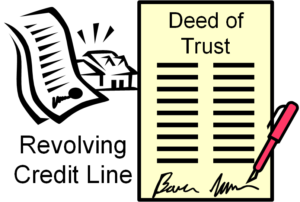
Revenue Ruling 2023-2
Revenue Ruling 2023-2 is Nothing New
The IRS ruled in Revenue Ruling 2023-2 that assets in an irrevocable trust outside the taxable estate of the grantor, do NOT get a step up in cost basis when the grantor dies.
Although this ruling has received some attention and disagreement in the media, it is nothing new and not really news. Any lawyer surprised by this hasn’t been paying attention. Revenue Ruling 2023-2 did not make a new rule. It affirmed a long standing rule.
Any time an Irrevocable Trust is outside the grantor’s taxable estate (i.e., a “completed gift”), it does NOT get a step up in basis at the grantor’s passing. If an Irrevocable trust is included in the grantor’s taxable estate, it does get a step up in basis. The step up in basis is a function of inclusion in the taxable estate. The decedent must own the asset to get a step up in basis. When a gift is completed to an irrevocable trust or otherwise, the decedent no longer owns the asset, and therefore it does not qualify for the step up in basis.
An Irrevocable trust outside the taxable estate avoids the estate tax, but the trade off is the assets do not get a step up in basis, so there may be a capital gains tax on appreciation. For the last century, the capital gains tax rate has been and is well below the marginal estate tax rate, so exchanging a high tax and unavoidable tax rate for a low and deferrable tax rate is worth it. Plus there are many ways to either defer or avoid the capital gains tax (1031 etc.).
How to Avoid Both Estate Taxes AND Get a Step Up in Basis
One strategy to both reduce estate taxes and get a step up in basis is to put a Home Equity Line of Credit (HELOC) or revolving credit line promissory note on real estate such as a residen ce secured by a mortgage (Deed of Trust) for the value of the house, so that the grantors can borrow money from the Family Bank. As the grantors draw cash out of the Family Bank to spend or live on, they deplete the equity in the residence.
ce secured by a mortgage (Deed of Trust) for the value of the house, so that the grantors can borrow money from the Family Bank. As the grantors draw cash out of the Family Bank to spend or live on, they deplete the equity in the residence.
 ce secured by a mortgage (Deed of Trust) for the value of the house, so that the grantors can borrow money from the Family Bank. As the grantors draw cash out of the Family Bank to spend or live on, they deplete the equity in the residence.
ce secured by a mortgage (Deed of Trust) for the value of the house, so that the grantors can borrow money from the Family Bank. As the grantors draw cash out of the Family Bank to spend or live on, they deplete the equity in the residence.The residence is still in their taxable estate, so it gets a step up in basis. But it will have little or no equity, so there will be little or no estate tax on it. This also has the effect of another layer of protection against predatory third party creditor claims. This is sometimes call this an “equity strip“.
This is an advanced strategy that should only be implemented with qualified legal guidance and assistance. It must be documented and implemented properly to work. In particular, it must specifically avoid fraudulent conveyance issues. This is one of the few strategies which, when implemented correctly, may be implemented after a claim is brought. It can make it possible for a person in distress over pending litigation claims, to access the equity in their residence to finance the cost of the litigation. In doing to, it may also insulate the residence from such claims.
Don’t do this on your own. Get help!
